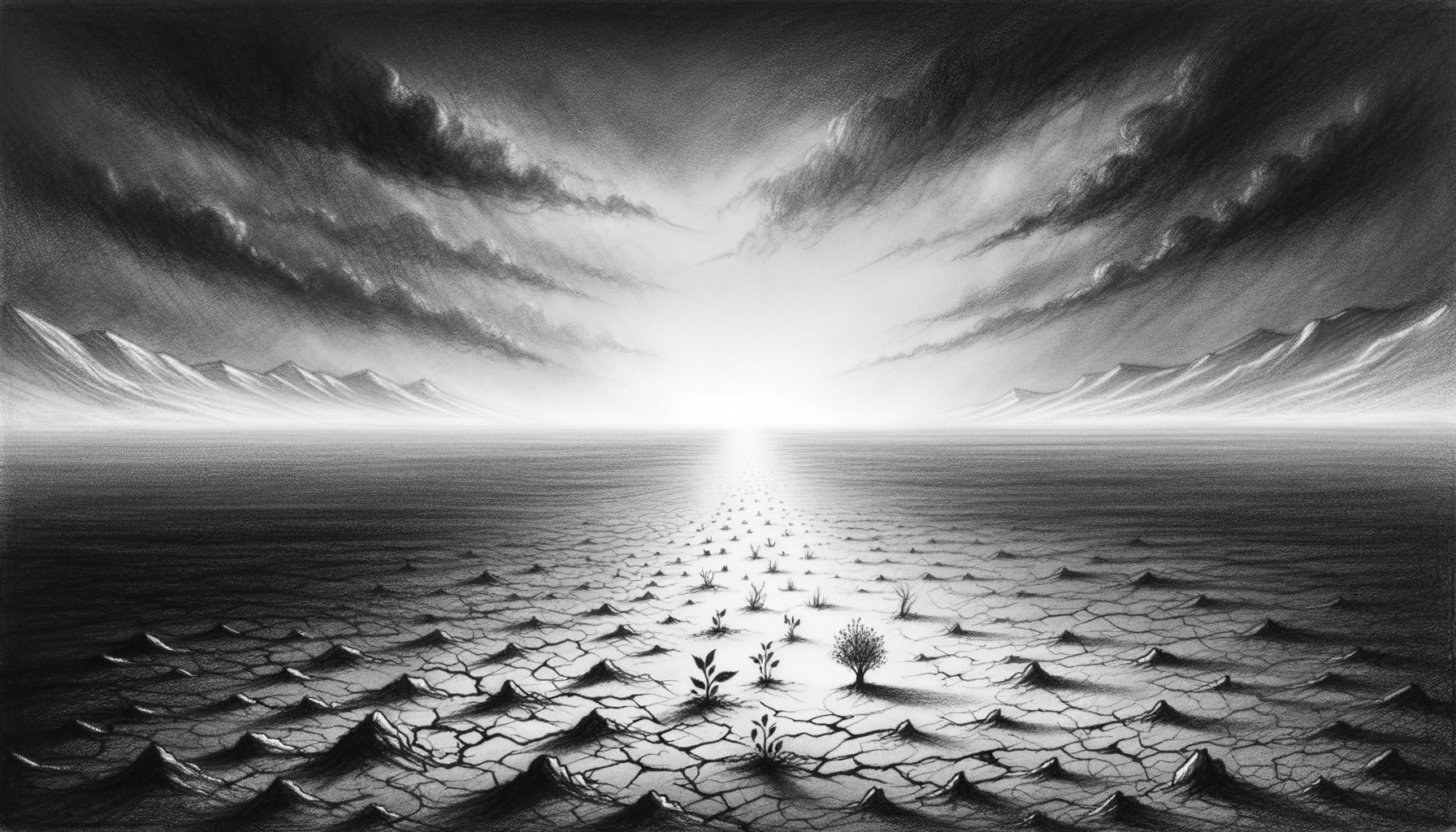Growing up in the shadow of the San Juan Mountains taught me a thing or two about facing fears. Picture this: a seven-year-old kid clutching the reins of a stubborn horse named Elvis, who, true to his namesake, had a flair for dramatic head tosses and an unrelenting distaste for creek crossings. For reasons that still elude me, my parents thought letting me guide a tourist group down a narrow ridge was a good idea. That was my first lesson in fear—that primal, gut-clenching terror that strikes when something valuable is at stake (in this case, my life and the lives of four tourists wearing ironic cowboy hats).
It didn’t take me long to realize fear isn’t something to exorcise—it’s something to work with. Whether I’m teaching a roomful of restless twenty-somethings or navigating the unmarked trails of modern relationships, fear is always there, whispering its doubts. The thing is, fear doesn’t just guard the gate to failure—it’s also the bouncer to the best parts of life.
Here’s how I’ve learned to invite fear to the rodeo and still hold the reins.
The Fear of Vulnerability: “What If They See the Real Me?”
I’ll be honest: few things are scarier than dropping the armor and letting someone see the actual, stripped-down version of you. Vulnerability feels a lot like standing in front of an unruly classroom without your lesson plan or, if you’re me, accidentally spilling your most embarrassing childhood story over dinner because you thought it would make you “relatable.” Spoiler: it didn’t.
But here’s the rub—relationships thrive in vulnerability. It’s the secret sauce of connection. The friends I trust the most, the family relationships that have stood the test of time, the love stories I’ve admired since my starry-eyed grad school days—it all boils down to people being brave enough to show up as themselves.
Stepping into vulnerability doesn’t mean laying all your cards out on the table at once. Think of it as peeling an onion (except hopefully less smelly and tearful). Share a little, read the room, and let reciprocity build trust over time.
Gray’s Trail Tip: Practice sharing something small but meaningful—a favorite song that’s not “cool” or a childhood hobby you stopped sharing because it felt too quirky. It sets the stage for deeper connections down the road. Remember: Elvis didn’t cross that creek in one leap. He tested the waters first (and then took his sweet time).
The Fear of Failure: “What If I Fall Flat on My Face?”
Failure and I go way back. My first big writing gig involved penning a stomach-churning love story set in the Old West that got more rejections than I care to admit. That’s not the kicker, though. The kicker was accidentally emailing a snippy response to one publisher who had passed on my pitch. (Pro-tip: triple-check your email recipients.)
Failure is humbling, but it’s also clarifying. When romance—or any relationship—goes south, it often leaves behind a map of your weak spots, your blind spots, and where you need to grow. Sometimes it’s learning to set boundaries; other times, it’s figuring out that your “cowboy charming” approach doesn’t work on, say, people who despise John Denver.
Instead of avoiding failure, I’ve learned to frame it as trail marker—not the end of the path, but a nudge to recalibrate.
Gray’s Trail Tip: After a misstep or failed bonding attempt, let yourself feel the disappointment, then forgive yourself and ask, “What’s the lesson here?” Growth doesn’t happen while everything’s smooth sailing (or on the rare days when the tourist horses actually behave). It happens when the wheels wobble a bit.
The Fear of Settling: “Am I Trading Adventure for Comfort?”
As someone who spent years herding cattle, wrangling tourists, and chasing romantic ideals straight out of a Willa Cather novel, I used to equate long-term relationships with “settling.” I imagined trading the rugged unpredictability of big love for Sunday routines and muted excitement—a thing with all the spark of decaf coffee.
Turns out, stability is far more thrilling when it’s shared with the right person. The real ride begins when you swap surface-level excitement for deep, steady trust. When you’re no longer chasing the high of the new but choosing each other every day, clichés be damned.
I’ve realized that when you take the fear of settling out of the equation, adventure doesn’t disappear—it gets redefined. Whether it’s learning a new skill together, tackling joint fears (hello, home-buying nightmares), or just laughing at the fact you both think Elvis movies are deeply underrated, sharing a grounded connection is plenty exciting.
Gray’s Trail Tip: Instead of asking, “Am I settling?” try asking, “Am I growing in this dynamic?” If the answer’s yes—or even “most days”—you’re likely building a connection that’s going places.
The Fear of Loss: “What If It All Goes Wrong?”
Loss doesn’t just haunt us when we’re deeply invested in someone; it’s baked into the human experience. Love, whether fleeting or forever, comes with no guarantees. Relationships can dissolve. Hearts can break. Even Elvis, my trusty (if temperamental) ranch horse, passed on after years of being my steadfast companion on dirt trails and wildflower meadows.
But here’s what no one tells you: fear of loss doesn’t stop you from losing. It only pulls you away from appreciating what you have right now. That’s not to say I’m some zen cowboy who’s immune to heartbreak—I feel it deeply. I’ve just learned that the only way to counter the fear of “what if it doesn’t last” is to lean harder into “what if it’s worth it while it does?”
Gray’s Trail Tip: Slow down. Look for the quiet moments of magic—moments when you laugh until your sides hurt, hug someone until your shoulders relax, or hear someone’s voice carry the weight of a storm. Those things are worth braving the risk for.
Conclusion: Ride the Trail Anyway
We all have fears that keep us from engaging fully with the people and experiences in our lives. Maybe it’s the fear of turning vulnerability into rejection, the fear of spanning new terrain only to fall flat, or the quiet but persistent fear of losing what you’ve worked so hard to build. Those fears are real, sure—but they’re also surmountable.
Here’s what climbing mountains (and navigating relationships) has taught me: the scariest trails are usually the ones with the best views. You might stumble now and then, but no one gets to the summit by staying at base camp.
So, the next time fear pipes up like an unruly horse on the trail, acknowledge it, loosen the reins, and keep going. After all, the riskiest part of any adventure isn’t falling off—it’s never leaving the stable in the first place.




















